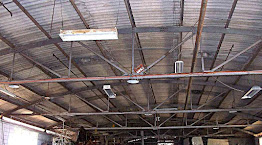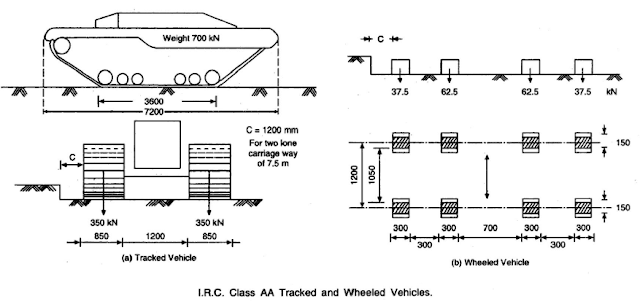Truss: Simple, Deficient and Redundant Truss & Determinate and Indeterminate Truss
Truss
A truss is basically a pin-jointed slender member structure that is used to carry loads. You might have noticed the use of trusses in supporting roofs and bridge decks. The roof trusses and bridge trusses generally use trusses of steel, however, wooden trusses are also used in supporting various structures that are not too heavy. Steel trusses are also used in transmission towers.
But notice one thing, in most of the roof and bridge
trusses, the members of the truss lies in a single plane whereas, in
transmission towers, the truss members do not lie in a single plane. So, the trusses which have all the members in a single plane are known
as plane truss otherwise the truss is known as space truss.
In trusses, the connection is supposed to be pin-jointed but in reality, no extra effort is made to make it so. However, the experiments have shown that the results are consistent with the results obtained by considering the joint as a pin joint. Pin-jointed connection in other words is also known as a hinged joint. Any member that has a hinged joint is restricted to the vertical and horizontal movement however it is free to rotate.
Perfect, deficient and redundant truss
Since the truss members are pin-jointed, any number of
members can be connected to a single joint in a truss. But it might not be
possible to analyze all the trusses and they all may or may not be sufficient
to carry loads.
Perfect truss
A perfect truss is a truss that has just a sufficient number
of members in order to carry loads without undergoing appreciable amount of
deformation in shape.
A triangular truss is the simplest perfect truss with three members and three joints. But in order to get a perfect truss of four joints, the two members should be added to the additional joint as shown in the figure.
Where m is the number of members in a truss
And, j is the number of joints in the same truss
But remember, any truss following the above condition may not be the perfect truss. Consider the below examples to understand.
 |
| Truss a |
 |
| Truss b |
Both of the above truss a & b follow the rule of perfect truss but the truss b is unstable and only truss a is a perfect truss. So, the only condition to determine the perfect truss is
that the truss should not undergo appreciable deformation under the action of
load with just a sufficient number of members.
Deficient truss
The truss that has fewer members than a perfect
truss is known as a deficient truss. Deficient truss follows the below condition:
Deficient trusses are unstable trusses.
Redundant truss
A truss structure that has more number of members
then required to make it perfect truss is known as a redundant truss. Redundant
truss follows the below condition:
Before going further into the determinate and
indeterminate truss, let’s talk about the external and internal reactions in a
truss.
In a truss structure, the load acts on joints, and
any single member of the truss transfers the load to the joints.
If a truss is in equilibrium, then all the
horizontal and vertical forces along with the net moment acting on the structure must be zero.
In a truss system, generally, two types of reactions
occur. First one is external support reactions and the second is internal reactions of truss
members on each joint as shown in the figure:
 |
| External support reactions in a truss due to load L |
 |
| Internal reactions at joints due to stresses developed in members |
Determinate and Indeterminate truss
Determinate Truss
If in a truss, the number of equilibrium equations is equal to
the number of unknowns then, the truss is said to be statically determinate.
If a truss is in equilibrium, then the forces at
each joint should be in equilibrium.
So, if a truss member has ‘j’ number of joints, then, there will be two equilibrium equations at each joint, and therefore, the total number of equations will become ‘2j’. The equilibrium equations at each joint will be
Where H is the horizontal reaction,
V is the vertical reactions
So, for a truss with ‘m’ number of members and ‘R’ number of
unknown support reactions, total unknowns = m + R, and hence, for the truss to
become statically determinate:
Such that, the number of unknown reactions is equal to the number of equations to determine each unknown reaction.
Generally, the number of external equilibrium equation is three i.e.
Where, H is the horizontal support reaction,
V is the vertical support reactions, and
M is the moment of all support reaction
And, therefore, if the number of unknown support reactions ‘R’ is 3 then the truss will be statically determinate (external).
Consider the below examples
Number of unknown reactions = 3
Hence, the given truss is statically determinate (externally)
Number of unknown reactions = 3
Number of joints = 6
so, it follows
And, hence, the truss is statically determinate (internal)
Indeterminate trusses
If, in a truss, the number of equilibrium equations is less than
the number of unknown reactions, then, the truss will be statically
indeterminate.
i.e.
So, for a truss with ‘m’ number of members and 3 unknown support reactions, total unknowns = m + 3, and hence, if:














Comments
Post a Comment
Your comment will be moderated.